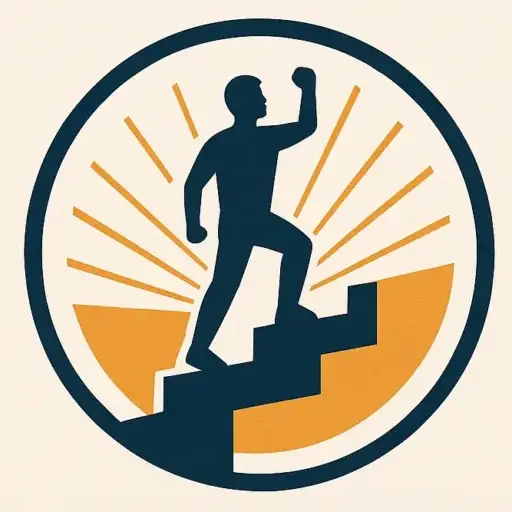Master the Body Language to Be a Good Leader
Leadership is an artwork that features a myriad of competencies and attributes. While conversation, selection-making, and imaginative and prescient are all vital additives of effective management, one regularly ignored aspect is body language. In reality, nonverbal cues may be just as influential, if not greater so, than the phrases a leader speaks. To emerge as an excellent chief, it is imperative to grasp the artwork of body language.
The Power of Nonverbal Communication
Before delving into the intricacies of body language and management, it is critical to apprehend the significant power of nonverbal communique. Research has proven that over ninety% of our communique is nonverbal, which means that that our gestures, facial expressions, posture, and tone of voice bring a wealth of data to others, regularly without us knowing it. Therefore, being aware of and harnessing this nonverbal energy can considerably enhance one’s management talents.
Confidence and Assertiveness

Confidence is an indicator of tremendous management, and it can be correctly conveyed thru body language. When you exude self assurance, your crew is more likely to accept as true with and comply with you. Here are a few body language cues that carry confidence and assertiveness:
1. Maintain Eye Contact: Good leaders maintain constant eye contact when speakme with others. This indicates that you are engaged, attentive, and assured to your message.
2. Strong Posture: Stand tall and maintain an upright posture. Slouching or hunching can make you appear uncertain or disinterested.
3. Use Gestures Purposefully: Gestures can improve your message. Use them to emphasize key points, but avoid excessive or distracting actions.
4. Firm Handshakes: A company, however now not overly aggressive handshake, can deliver confidence and professionalism.
5. Speak Clearly and Slowly: A clear and planned speaking tempo demonstrates confidence in what you are pronouncing.

6. Avoid Nervous Habits: Fidgeting, tapping, or pacing can sign anxiety or uncertainty. Be mindful of those behavior and paintings to control them.
7. Open Body Language: Keep your hands uncrossed and your frame open. This indicates approachability and openness to collaboration.
Active Listening and Empathy

Effective management additionally calls for the ability to listen actively and empathize with team participants. Your body language plays a pivotal role in demonstrating your attentiveness and know-how:
1. Nodding: Gently nodding your head while someone is talking indicates which you are actively listening and processing their phrases.
2. Leaning In: Slightly leaning towards the speaker can show that you are engaged and interested by what they have to mention.
3. Facial Expressions: Your facial expressions have to mirror the feelings conveyed with the aid of the speaker. A sympathetic smile or a worried furrowed forehead can speak empathy.

4. Mirroring: Subtly mirroring the body language of the man or woman you’re conversing with can foster rapport and connection.
5. Minimal Interruptions: Avoid interrupting others whilst they talk. Wait for a pause earlier than providing your input.
6. Maintain Focus: Put away distractions, together with your telephone or different gadgets, while engaging in conversations. This demonstrates admire for the speaker.
Building Trust and Rapport

Trust is the foundation of powerful management, and your frame language performs a important position in building and retaining agree with inside your crew:
1. Consistency: Ensure that your verbal and nonverbal verbal exchange align. Inconsistencies can erode trust.
2. Transparency: Use open and honest frame language to deliver transparency. Avoid crossing your arms or hiding your arms, which can be interpreted as concealing information.
3. Approachability: Make yourself approachable by smiling, maintaining eye contact, and the use of open gestures. Approachability encourages group individuals to are seeking for your guidance and enter.

4. Personal Space: Respect personal area limitations to keep away from making others sense uncomfortable or threatened.
5. Acknowledgment: Acknowledge and appreciate the contributions of your crew participants with positive nonverbal cues, consisting of a pat at the back or a friendly nod.
Adapting to Different Situations

A skilled leader knows a way to adapt their body language to diverse situations and people. Different contexts and personalities might also require exceptional tactics:
1. Tailor Your Communication: Be bendy for your body language to healthy the wishes of the situation. For example, you can want to seem more assertive in a disaster, even as adopting a extra empathetic stance in the course of a team member’s personal warfare.
2. Cultural Awareness: Be aware of cultural variations in body language. What may be taken into consideration respectful in one way of life might be perceived otherwise in any other.

3. Individualized Approach: Recognize that different team individuals may additionally reply to distinct nonverbal cues. Some may additionally price direct eye touch, while others may additionally opt for greater personal space.
Handling Challenges and Conflict

Conflict decision is an fundamental a part of leadership. Your body language for the duration of hard conversations can determine the outcome:
1. Remain Calm: Maintain a composed and managed demeanor, even if addressing contentious issues. Avoid competitive or protective body language.
2. Active Listening: Use lively listening cues to show which you are thinking about the other character’s perspective, even in case you disagree.
3. Open Dialogue: Encourage open talk by way of using open frame language and alluring gestures. Avoid crossing your hands or acting confrontational.
4. Take Breaks: If feelings run high, remember taking a destroy to cool off and regain composure before continuing the verbal exchange.

Self-Awareness and Improvement

To truely master body language as a leader, it’s critical to constantly practice self-recognition and attempt for development:
1. Feedback: Seek comments from relied on colleagues or mentors approximately your frame language. They may additionally provide precious insights and suggestions for improvement.
2. Video Analysis: Record yourself during presentations or crucial conversations and overview the pictures to pick out regions for development.

3. Body Language Workshops: Consider attending workshops or schooling classes on frame language to decorate your skills.
4. Daily Practice: Practice good frame language in regular interactions, no longer simply during formal conferences or shows.
5. Mindfulness: Practice mindfulness to come to be more attuned in your own body language and emotions. This will let you better manipulate and modify your nonverbal cues.
Conclusion
Mastering body language is a vital aspect of turning into a terrific chief. Your nonverbal cues can either decorate or prevent your leadership effectiveness, so it is critical to expand an cognizance of your personal frame language and its impact on others. By conveying self assurance, empathy, trustworthiness, and adaptability through your frame language, you may inspire and lead your team to achievement while building strong, effective relationships alongside the way. As the pronouncing is going, moves talk louder than phrases, and yo
